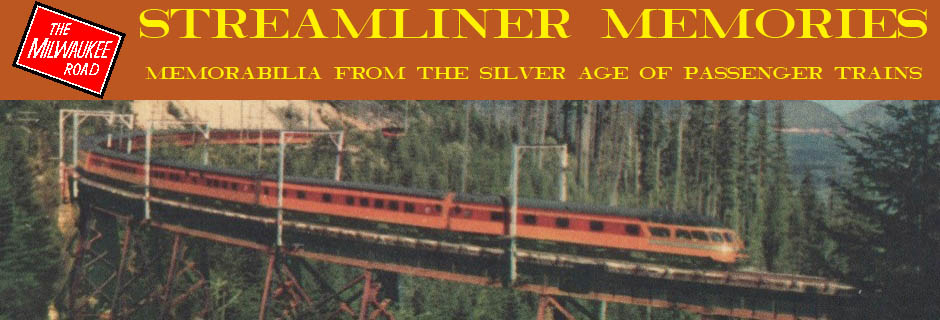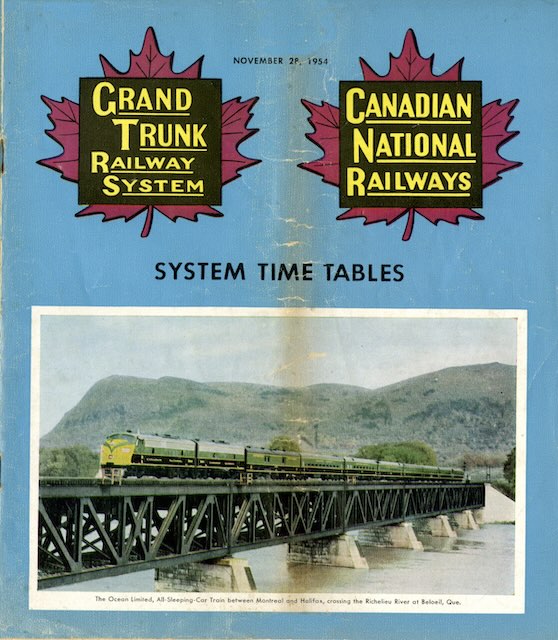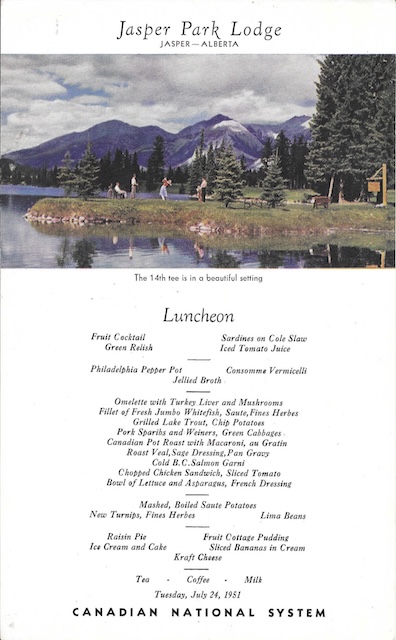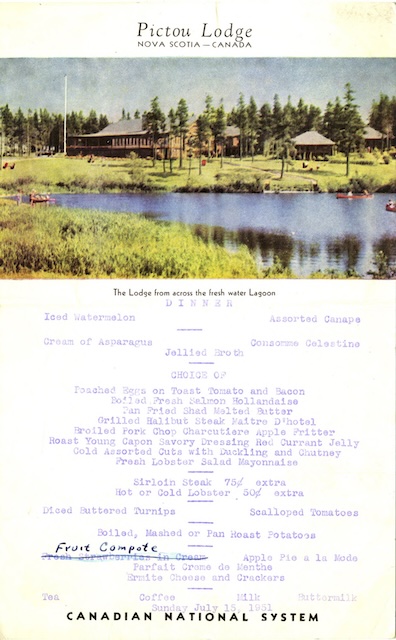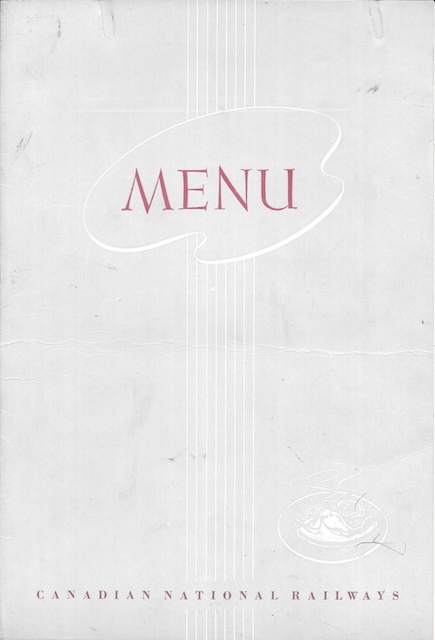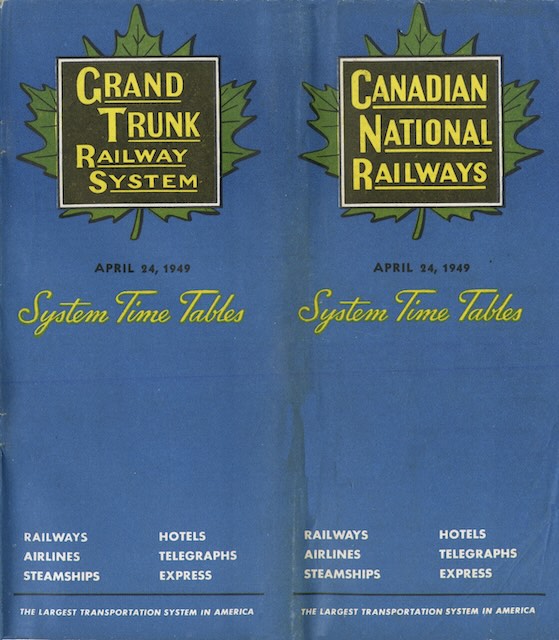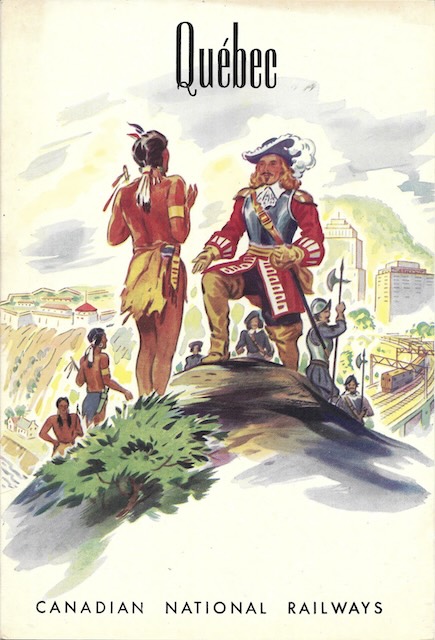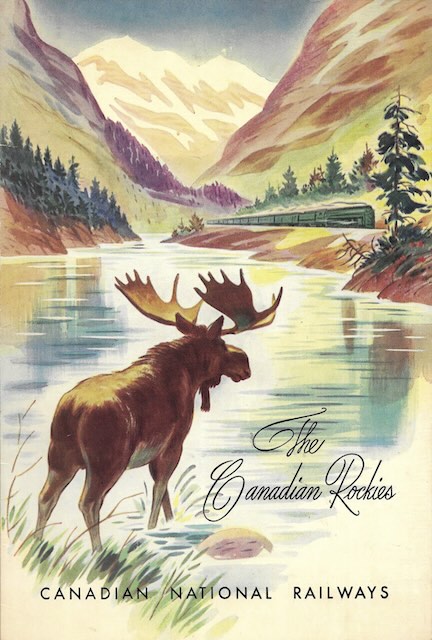Canadian National’s streamlined Super Continental was inaugurated on April 24, 1955, which just happened to be the day this timetable went into effect. The back cover ad brags that the train was “Dieselized all the way” and that it provided “faster service,” taking 70-3/4 hours from Toronto to Vancouver and 73-1/3 hours from Montreal to Vancouver. Meanwhile, its predecessor, the Continental, “will continue to operate on an improved schedule.”
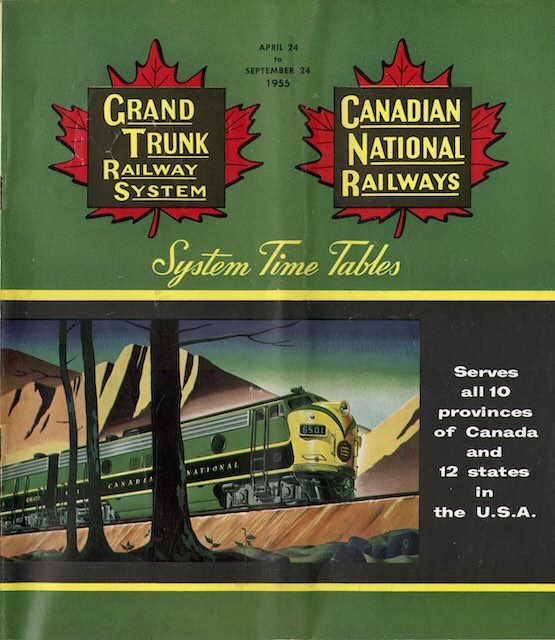 Click image to download a 56.2-MB PDF of this 88-page timetable.
Click image to download a 56.2-MB PDF of this 88-page timetable.
The ad didn’t say so, but the Super Continental saved more than 12 hours on the Toronto-Vancouver route and more than 14 hours between Montreal and Vancouver. As shown in yesterday’s timetable, the 1954 Continental was really two completely separate trains: trains 1 & 2 went between Montreal and Vancouver while 3 & 4 did the Toronto-Vancouver route, running about an hour earlier westbound and an hour later eastbound. Continue reading
